We will never know who was the first man or woman to try to give structure to the measurement of time, although in the Bible, the book of Genesis exemplified change on a day-to-day basis, and with evening and morning. The Ancient Egyptians used simple sundials and divided days into smaller parts, and it has been suggested that as early as 1,500BC, they divided the interval between sunrise and sunset into 12 parts.
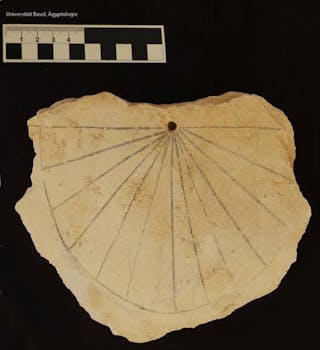
Our familiar divisions of time are more recent and current terminology about time and time-keeping originated from the Babylonians and the Jews (the seven-day week in Genesis). The Ancient Romans, during the republic, went with eight days – including a shopping day where people would buy and sell things. When the Roman emperor Constantine made Christianity the state religion early in the 4th century AD, the seven‑day week was officially adopted.
The sundial (of course an effective instrument only when the sun shines) was refined by the Greeks and taken further by the Romans a few centuries later. The Romans also used water clocks which they calibrated from a sundial and so they could measure time even when the sun was not shining, at night or on foggy days. Known as a clepsydra, it uses a flow of water to measure time. Typically a container is filled with water, and the water is drained slowly and evenly out of the container – markings are used to show the passage of time.
But the changing length of the day with the seasons in the Roman world made time measurement much more fluid than today: hours were originally calculated for daytime and based on a division of the day. The water clock made it possible to measure time in a simple and reasonably reliable way.
Clocks come of age
The better measurement of time has been a human fascination for centuries but in the 18th century the clock emerged as a scientific instrument in its own right, notwithstanding its conventional role to mark the passing of the hours.
The pendulum clock owes is refinement to Galileo noticing the regularity of a suspended lamp swinging back and forth in the cathedral of Pisa, when he was still a student there.
The high water mark of an instrument of measuring time that was both perfectly fit for purpose and elegant was the marine chronometer invented by John Harrison in England. It was a response to the need to measure time on board ship to a high level of precision, and so to be able to determine longitude (the pendulum clock was unsuitable for marine use due to the motion of the ship).
Harrison’s device drew on his brilliance in design and knowledge of the best materials. His clock enabled the measurement of time, and so a position at sea, to high accuracy. It gave the Royal Navy an unprecedented tool for navigation.
The work of 20th-century watch and clock makers continued that tradition – the skill of George Daniels in Britain in creating some of the best and most beautiful timepieces using traditional and hand-crafted methods can be seen in the permanent exhibition now at the Science Museum in London.
Atoms and lasers
Measuring time also changed in the 20th century changed through the development of the atomic clock in the 1950s at the National Physical Laboratory. This allowed for new and better definition of time, and the second as its prime measure.
The invention of the laser in 1960 changed time measurement for ever. Lasers can produce pulses of a duration of a few attoseconds – 10⁻¹⁸ seconds – and the accuracy of international time measurement must reflect this.
Time today is defined not by a second that we may have expected to be a fraction – 1/86,400 – of the day. Instead, it is through an atomic frequency: formally done through something called the “caesium standard”. This measures the exactnumber of “cycles” of radiation – 9,192 631,770 – that it takes for a caesium 133 atom to transition from one state of energy into another.
Roman numerals are one of the most classic designs found on clocks and watches. As far as we can go back in history, there have always been clocks, pocket watches and wristwatches with Roman numerals on the dials. However, owners of watches with Roman numerals might have noticed something weird, something rather unusual. While the numeral 4 is commonly written IV in the Roman numeric system, most watches rely on the typography IIII. And of course, just like us, you might have asked yourself why? As always, there is no single answer to a problem, but here are some possible explanations for this absurdly important question.
The Roman numeric system isn’t widely used anymore. Most of Western countries rely on Arabic numerals, Asian countries have their own numeric system and Arabic culture uses a typography that is different from the classical Arabic numerals. However, in watchmaking, Roman numerals have been used and are still in use on multiple dials.
Owners of antique pocket watches or of modern Glashütte Original, Lange, Ulysse Nardin, Blancpain, Cartier or even Rolex watches might have noticed that the 4th numeral on the dial, the one indicating 4 o’clock, isn’t written in the traditional Roman way. While the 4 is commonly written IV, the dials of our watches and clocks rely, most of the time, on a surprising IIII representation. Of course, there are exceptions to the rule as, for instance, Big Ben in London. However, on most dials, 4 o’clock is depicted with IIII.

It’s now time to try to find an answer to this crucial question (irony mode on)… Jokes apart, even though it won’t change the face of the world, it is interesting to understand why the watchmaking world almost unanimously decided to switch to the number IIII instead of the more common number IV. As always, such a question won’t lead to a single and definitive answer, but here some of the possible explanations we found.
IIII was the earliest way to write 4
Commonly, Roman numerals are written this way: I, II, III, IV, V, VI, VII, VIII, IX, X, XI, XII and so on. Roman numerals originated in ancient Rome, approximately 1000BC, and remained the usual way of writing numbers throughout Europe well into the Late Middle Ages, long after the decline of the Roman Empire. It’s only around the 14th century that Roman numerals began to be replaced by modern (and easier to use) Arabic numerals. Numbers in the Roman system are represented by combinations of letters from the Latin alphabet. The decline of Roman numerals coincides with the decline of Latin and the emergence of the Renaissance.
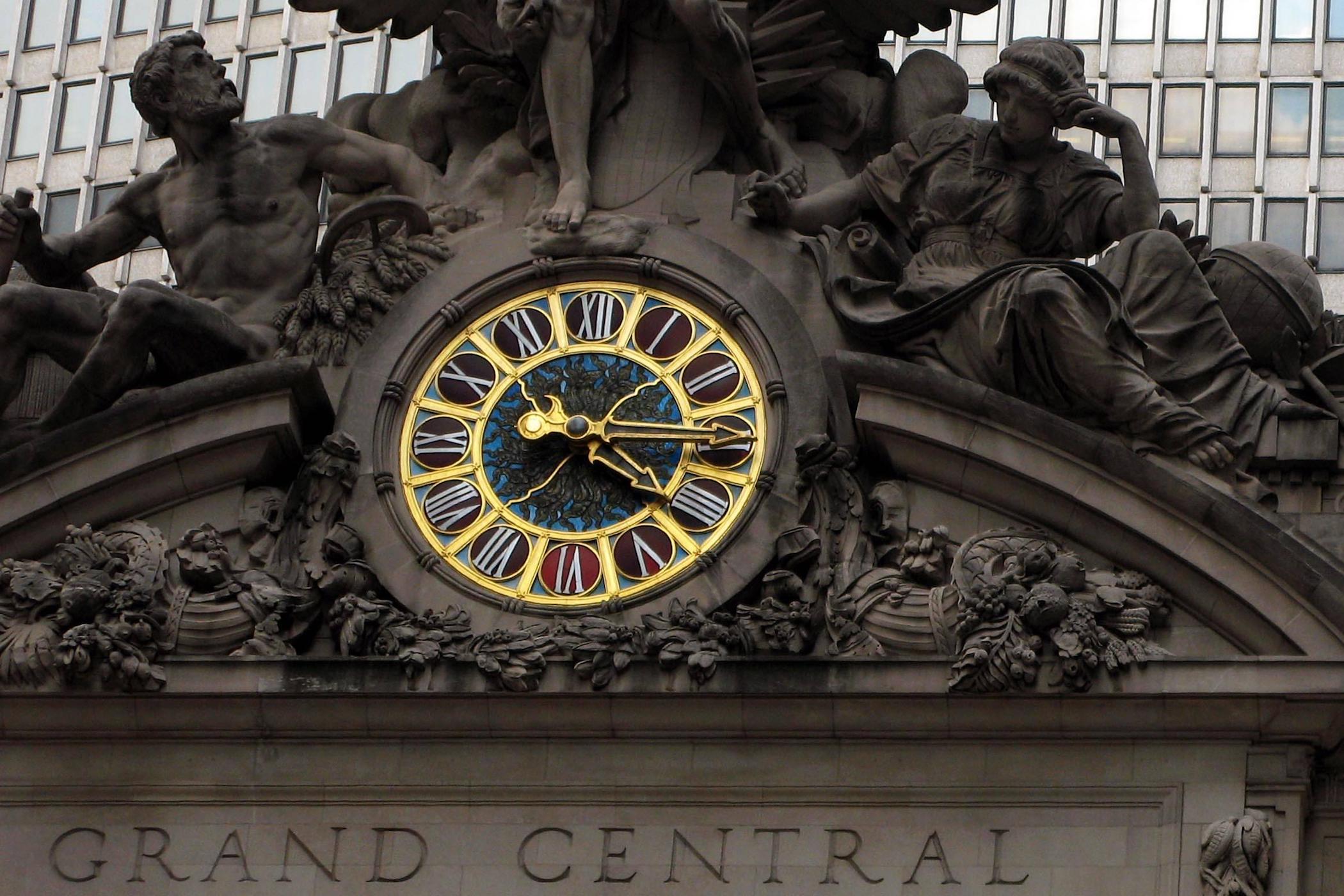
However, even though it is now widely accepted that 4 must be written IV, the original and most ancient pattern for Roman numerals wasn’t the same as what we know today. Earliest models did, in fact, use VIIII for 9 (instead of IX) and IIII for 4 (instead of IV). However, these two numerals proved problematic, they were easily confused with III and VIII. Instead of the original additive notation, the Roman numeral system changed to the more familiar subtractive notation. However, this was well after the fall of the Roman Empire.
The first mechanical clocks were created in Europe during the 13th century at a time when Roman numerals were still in use – in addition to that, most clocks were mounted on churches, and Latin was the official Catholic language. It thus makes sense for most of the ancient clocks to feature Roman numerals on their dials. However, the reason why clockmakers chose to use IIII instead of IV when this representation wasn’t in use, remains unclear.
An offence to Jupiter
While Romans didn’t make it to the mechanical clock, they had adopted the concept of the sundial, based on shadow clocks from ancient Babylonian astronomy (around 1500BC). We must not forget that watchmaking is a child of astronomy. For this reason, multiple sundials were found in Rome and in Romans’ pockets – yes, the pocket-sundial… Some antique sundials have been found featuring Roman numerals engraved. Again, some featured IV, some featured IIII.
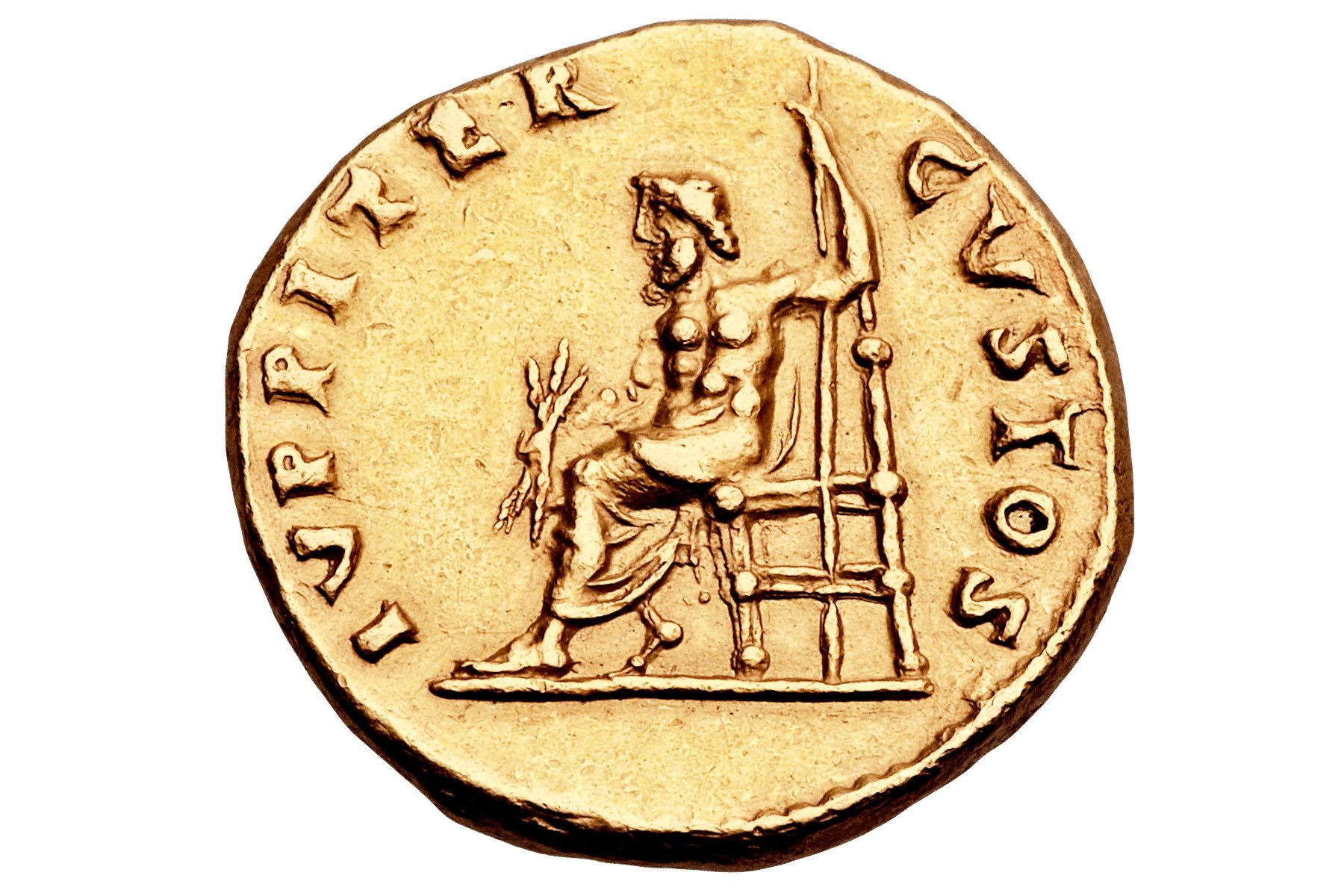
One of the reasons why IIII was used at that time could be explained by Roman mythology. Back then, Rome’s supreme deity was Jupiter, god of the sky and thunder and king of the gods in Ancient Roman religion. In Latin, Jupiter was spelt IVPPITER. As you don’t mess with gods, Romans might have felt hesitant to engrave part of their supreme deity’s name on a sundial or printed in books. This is why the number IIII, even though inconvenient, might have been prefered over IV. While sundials had become obsolete with the advent of watchmaking, the number IIII might have been used just for the sake of tradition.
Easier for the average non-educated citizen
Even though the subtractive notation is now widely accepted for Roman numerals, its use came gradually and early clockmakers might still have had the choice of whether or not to use or not to use IV. As we mentioned, primitive clocks were mounted on top of churches as the unique place where time was indicated in a city.
We have to remember that back in Ancient Times and the Middle Ages, only a small portion of the population was able to write, read and calculate. This might be a way to explain the use of IIII instead of IV. While IV requires some maths – basic maths, you’ll agree, for us educated people, but certainly, something that was too complex for the average, non-educated farmer living in France or Germany in 1650.
The numeral IIII might have remained in use because it was easily recognisable as four – the additive notation might have been easier for a large portion of the non-educated European population. The majority of people weren’t literate or numerate and a simple subtraction was probably too complex for them. Also, this might have implied confusion between IV and VI, as well as between IX and XI. This is why on some clocks nine is represented by VIIII.
The lazy clockmaker
One hypothesis we came up with is that of the “lazy clockmaker”… One that we don’t really take seriously. While this doesn’t apply to clocks with cut-out or painted numerals if the numerals were cast in metal having IIII instead of IV and VIIII instead of IX could have made the clockmaker’s life slightly easier.
If you rely on the additive notation, you’ll end up with these numerals: I, II, III, IIII, V, VI, VII, VIII, VIIII, X, XI, XII. This means that you can create fewer moulds, as you’ll use the same basic mould for the four first numerals and the same basic mould for the numbers from VI to VIIII. Only three moulds would be required: a first one shaped like IIII that was partially filled to create the numbers I, II, III and IIII, a second one shaped like VIIII used to create the numbers V, VI, VII, VIII and VIIII and a last one shaped like XII, used to cast the number X, XI and XII.

Having a dial relying on the more classical I, II, III, IV, V, VI, VII, VIII, IX, X, XI, XII style would have required extra moulds… Admittedly, not the most convincing theory.
Louis XIV “the Sun King”
A more modern theory involves French King Louis XIV. Just to give you an idea of his modesty, this French monarch was nicknamed Louis le Grand (Louis the Great) or Le Roi Soleil (The Sun King). One of the most powerful French monarchs, he consolidated a system of absolute monarchical rule in France with the whole political and religious system revolving around his figure – the concept of the divine right of Kings, creating a centralised state which would later lead to the French Revolution (under Louis XVI).
For the same reasons as Jupiter wouldn’t want two letters found in his name to be written on a sundial, it could have been possible that not-so-modest King Louis XIV preferred IIII over IV to be used in clocks. Being the representation of God on Earth, a part of his name couldn’t be printed on the dial of a simple clock.
However, this theory seems quite implausible. The use of IIII existed in multiple areas already and under the reign of many different monarchs whose names didn’t contain the letters IV. This doesn’t seem to be a sufficient explanation to reject the subtractive notation.
The visual Balance
The last possible explanation is the most rational of them all – and thus, probably the most plausible too. Commonly, clocks and watches display time on 12 hours. 12 numerals are thus printed on their dials. One of the reasons for the use of IIII instead of IV could easily be to obtain a greater visual balance.
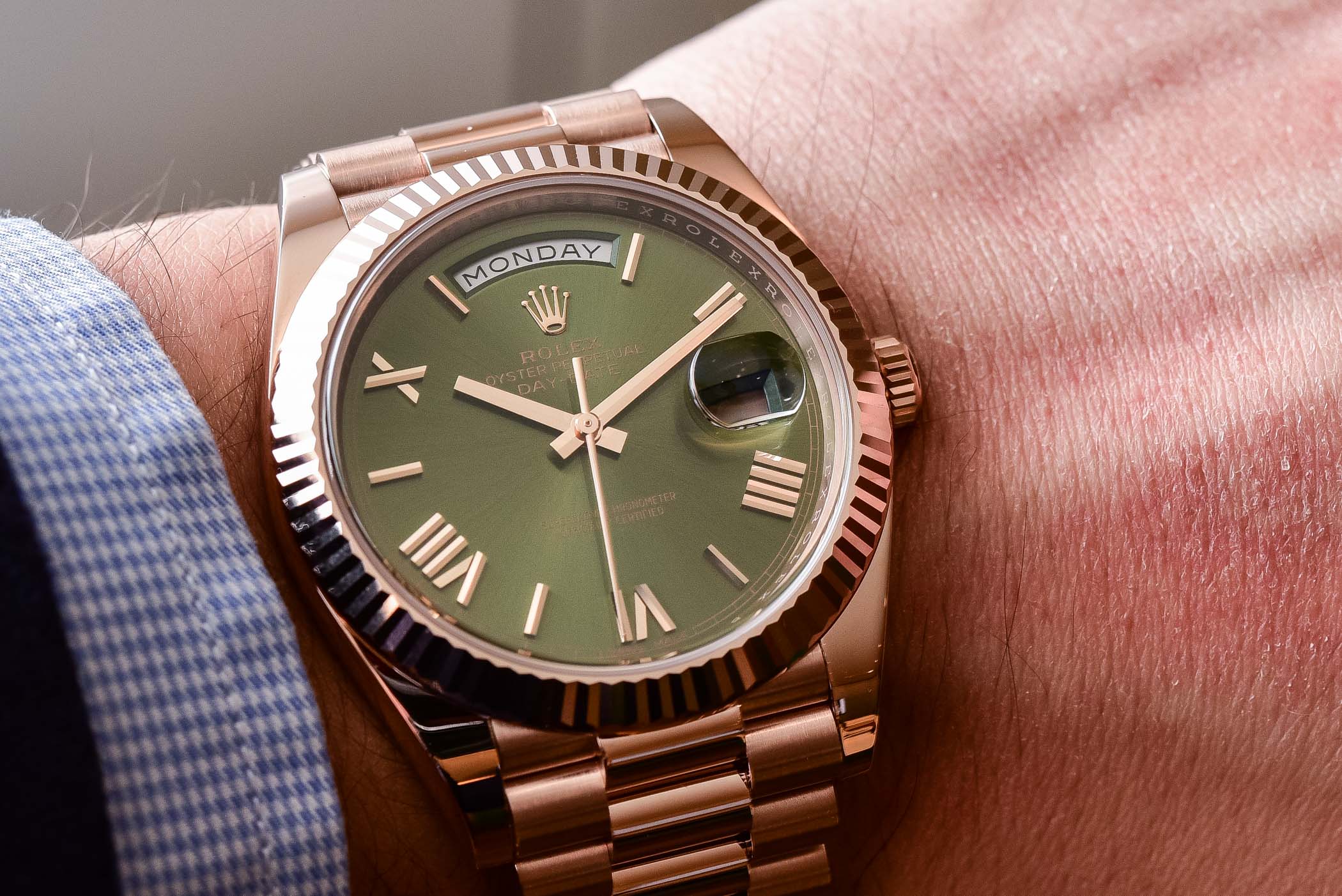
Most modern or vintage watches and clocks rely on a mix of additive notation and subtractive notation (where the 4 is IIII and the 9 is IX). This way, the dial features the following numerals: I, II, III, IIII, V, VI, VII, VIII, IX, X, XI, XII. With this combination, you obtain three identical areas on the dial, each of them using the same kind of numerals. The first third only uses I, the second third is the only one using the V and finally, the last third is the only one featuring numerals with X. This way, you’re balancing the dial with three distinct areas, creating a more elegant and harmonious dial.
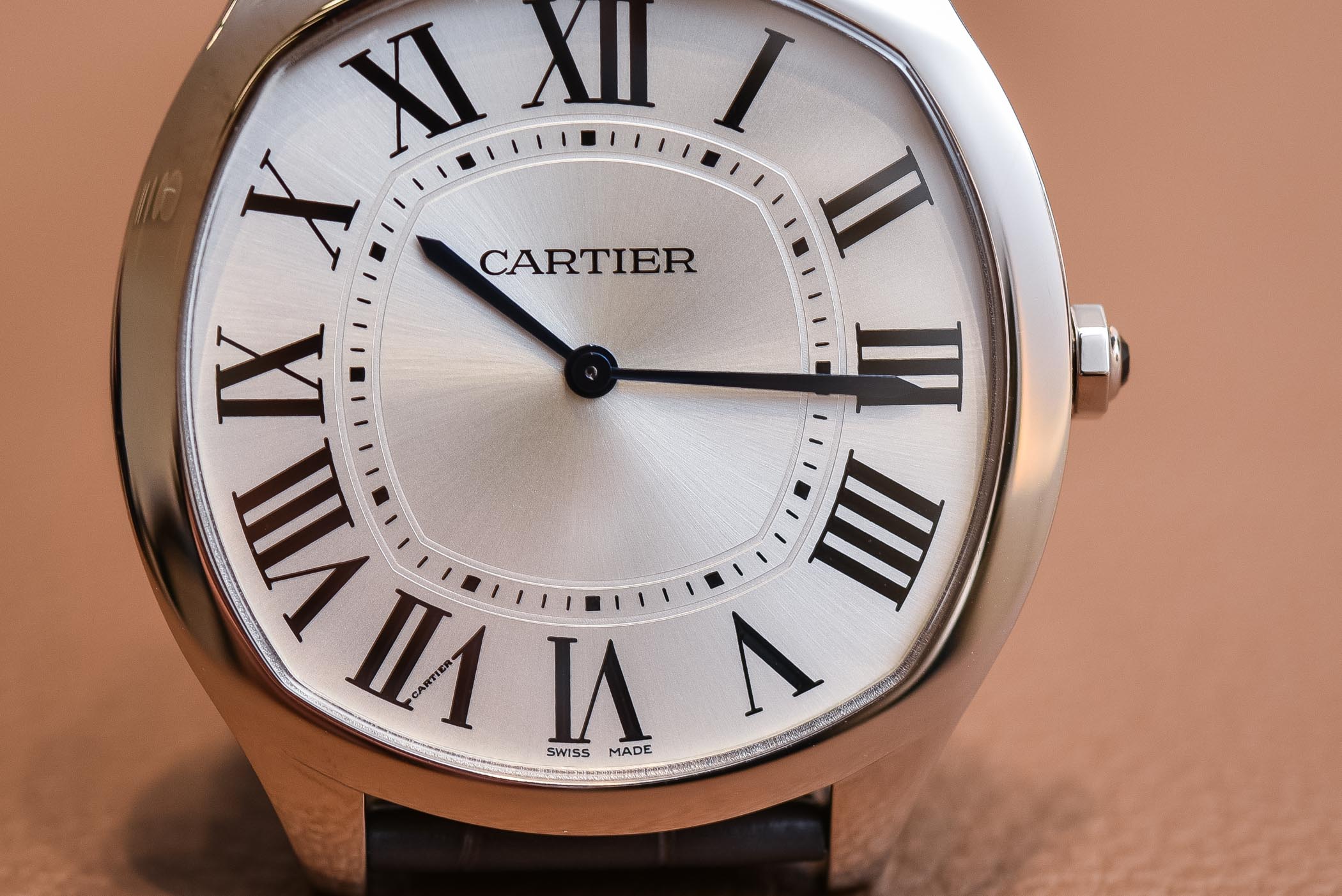
Also, in the same vein, the numeral IIII is easier to read than the numeral IV, especially when it is upside down, as often on modern watches – where Roman numerals are applied or printed radially (pointing to the centre of the dial).
Still, not one definitive answer, but a mix of traditions, ancient practices and practical reasons might explain why the watchmaking industry still, today, relies on the use of IIII on most of the dials featuring Roman numerals. And of course, there will always be exceptions to the rule…
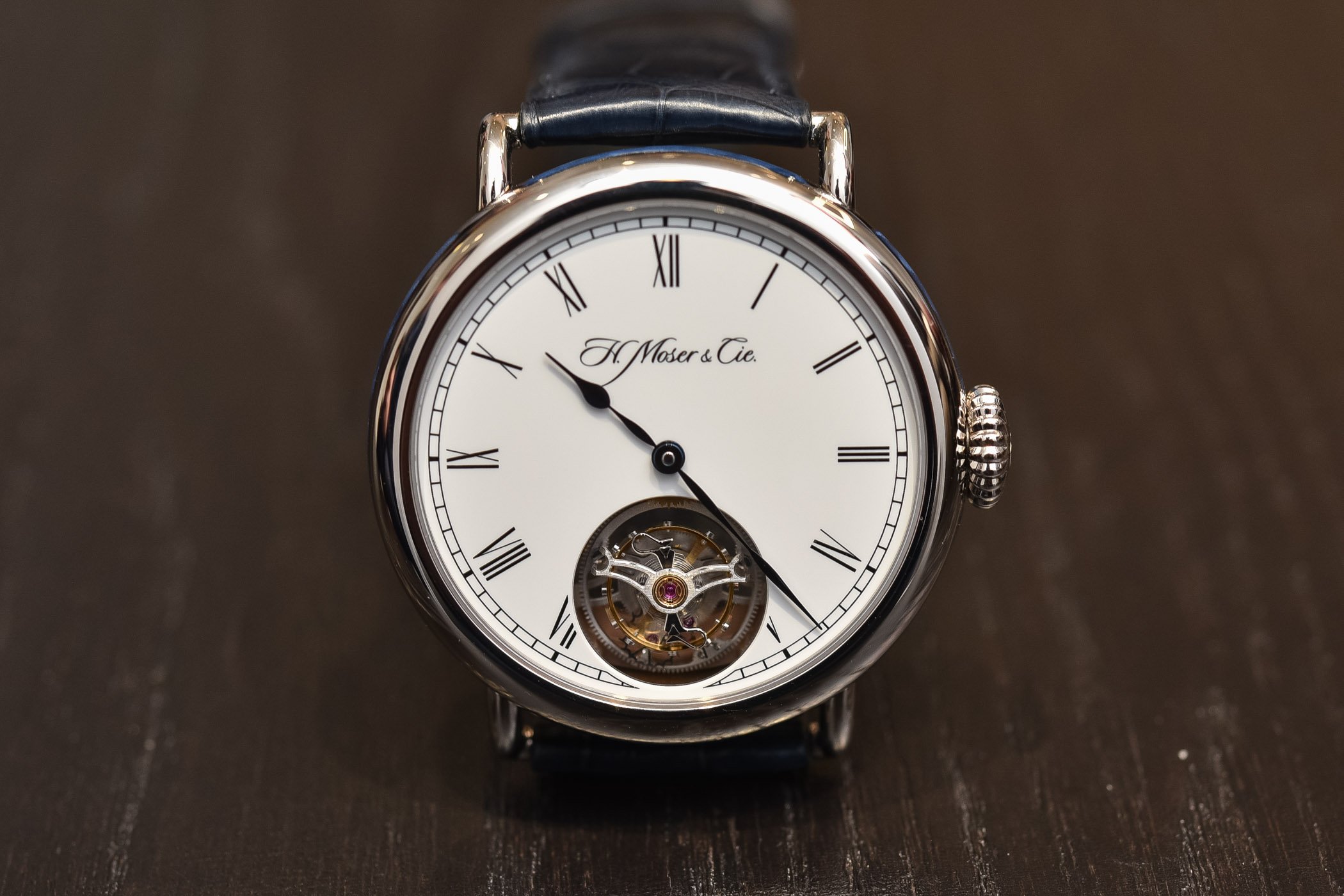
Have you ever wondered how people in ancient Rome kept time? How many hours were there in a day? Were there different clocks for measuring time during days and at nights?
Let’s take a tour of ancient Rome and find out.
The Romans had 12 day-hours and 12 night-hours.
The first daylight hour (hora prima) began at sunrise, noon was the sixth hour (hora sexta), and the last hour (hora duodecima) ended at sunset.
There were no minutes or seconds. Time jumped from hour to hour, as the day progressed. The busiest hours of the days were the fifth (hora quinta) and sixth hours (around noon), when most Roman men gathered in the forum to trade, catch up with the latest gossip or simply hang out with their friends.
The night-hours were also divided into 4 watches or vigiliae (3 hours each): Prima vigilia, secunda vigilia, tertia vigilia, quarta vigilia.
Other sources state that the night was divided into 8 watches: Vespera, Prima fax, Concubia and Intempesta (from sunset to midnight) & Inclinatio, Gallicinium, Conticinium & Diluculum (from midnight to sunrise)
Surprisingly, the day-hours & night-hours were not equal in duration.
In summer months, as the days were longer than nights, so was the duration of the day-hour. It could be as long as (our) 90 minutes, during the peak of summer. Conversely, during midwinters, the day-hours were shorter — about 45 minutes — and the night-hours expanded to coincide with the duration of darkness.
When I first read that, my ‘equi-hour-concept’ mind took some time to digest the information.
The Roman hours also varied according to the place when the Roman legions waged wars in far off lands, due to difference in latitude from the city of Rome.
Isn’t that interesting? You can imagine my writerly brain going berserk, thinking of all the crafty ways how this discrepancy in time-keeping could be exploited by a villain bent on wreaking havoc.
Understandably, the clocks that measured time during day, were solar clocks, as they relied on sunlight. They were simple sundials with a gnomon that cast a shadow on a graduated circular disc. And that’s how Romans told time, 3rd century BC onwards.

Ancient Solar Clock … it’s 12 noon!
A solar clock was constructed during the reign of Augutus, in 9 BC, at the Field of Mars. An Egyptian obelisk, almost 34 m high, served as its gnomon. Click here to read about the Solarium Augusti.
But when the sun set, or on cloudy days, the sundials were rendered useless. For that reason, Romans adopted the Greek water clocks to measure time at night.
Much of our current terminology about time and time keeping originated during Roman times.
After the Julian reform of 46 B.C. the Roman calendar -like ours, which is its offspring -was governed by the length of the earth’s circuit of the sun. The twelve months of our year retain by the sequence, the length, the names which were assigned them by the genius of Caesar and the prudence of Augustus. From the beginning of the empire each of them, including February in both ordinary years and leap year, contained the number of days to which we are still accustomed.
Another element of Roman time that is familiar to us is the the week. The week divided into seven days, named after planets was borrowed from the Babylonians by way of the Jews. The seven day week of late Roman times has survived in the Latinate names for the days (except for Sunday, "the Lord's Day"). In English we substitute a Germanic divinity's name for Tuesday, Wednesday, Thursday and Friday.
| English | Sunday | Monday | Tuesday | Wednesday | Thursday | Friday | Saturday |
| French | dimanche | lundi | mardi | mercredi | jeudi | vendredi | samedi |
| Italian | Domenica | Lunedi | Martedi | Mercoledi | Giovedi | Venerdi | Sabato |
| Roman equivalent | sun's day | luna's (Moon) day | Mars' day | Mercury's day | Jupiter's day | Venus' day | Saturn's day |
The seven day week did not become part of Roman life until late in their history (321 AD). Before this time, the Romans had a division of the month based on a market day recurring every eight days. The market day was called nundinae (novem dies = "nine days," the Romans counted both ends of a series), but this unit of time did not seem to shape the lives of the ancient Romans the way our week does for ours with its regular recurring rest days at its end (Saturday and Sunday).
In addition to the old official division of the months by the Calends (first of each month), the Nones (the fifth or seventh day) and the Ides (the thirteenth or fifteenth day), the division into weeks of seven days is subordinate to the seven planets whose movements were believed to regulate the universe. By the beginning of the third century this usage had become so firmly anchored in the popular consciousness that Dio Cassius considered it specifically Roman. With only one minor modification-the substitution of the day of the Lord, for the day of the Sun, it has in most countries of Latin speech survived both the decadence of the astrologers and the triumph of Christianity. Finally each day of the seven was divided into twenty-four hours which were reckoned to begin, not as with the Babylonians, at sunrise, nor, as among the Greeks, at sunset, but as but as is still the case with us, at midnight. This ends the analogies between time a the ancients counted it and as we do; the Latin “hours,” late Intruders Into the Roman day, though they bear the same name and were of the same number as ours, were in reality very different.
At the end of the fourth century B.C. they were still content to divide the day into two parts, before midday and after. Naturally the important thing was then to note the moment when the sun crossed the meridian. One of the consul's subordinates was told off to keep a lookout for it and to announce it to the people busy in the Forum, as well as to the lawyers who, if their pleadings were to be valid, must present themselves before the tribunal before midday. The herald's instructions were to make his announcement when he saw the sun "between the rostra and the graecostasis (a place in the Forum)"
By the time of the wars against Pyrrhus some slight progress had been made by dividing the two halves of the day into two parts: into the early morning and forenoon on one hand; and afternoon and evening on the other. But it was not until the beginning of the First Punic War in 264 B.C. that the "hours" and horologium (sun-dial, see sidebar) of the Greeks were introduced into the city. One If the consuls of that year, Valerius Messalla, had brought back with other booty from Sicily the sun-dial of Catana and set it up as it was on the comitium (an assembly place), where for more than three generations the lines engraved on its face for another latitude continued to supply the Romans with an artificial time. In spite of the assertion of Pliny the Elder that they blindly obeyed it for ninety-nine years, we must think that they persisted in ignorance rather than in willful error. They probably took no interest at all in Messalla's sun-dial and continued to govern their day in the old happy-go-lucky manner by the apparent course of the sun above the monuments of their public places, as if the horologium had never existed.
In the year 164 B.C., however, three years after Pydna, the enlightened generosity of the censor Q. Marcius Philippus endowed the Romans with their first horologium accurately calculated for their own latitude and hence reasonably accurate, and if we are to believe Pliny the Naturalist, they welcomed the gift as a coveted treasure. For thirty years their legions had fought in Greek territory, almost without ceasing, first against Philip V, then against the Aetolians and Antiochus of Syria, finally against Perseus; and they had gradually become familiar with the possessions of their enemies. At times, perhaps, they had toyed, without undue success, with a system of hours a trifle less erratic and uncertain than the one that had hitherto sufficed them. So they were pleased to have a sun-dial brought home and fitted up in their own country. Not to be behind Q. Marcius Philippus, the censors who succeeded him in office, P. Cornelius Scipio Nasica I and- M. Popilius Laenas, completed the work he had begun by flanking his sun-dial with a water-clock to supplement its services at night or on foggy days.
Roman Water Clocks
It was more than a hundred years since the Alexandrians had equipped themselves with water-clocks which Ctesibius had evolved from the ancient water-clocks to remedy the inevitable failure of the horologium proper. This became known in Latin as the horologium ex aqua. Nothing could well have been simpler than the mechanism of the water-clock. Let us imagine the water-clock- that is, a transparent vessel of water with a regular intake- placed near a sun-dial. When the gnomon casts its shadow on a curve of the vessel, we need only to mark the level of the water at that moment by incising a line on the outside of the water container. When the shadow reaches the next curve of the polos, we make another mark, and so on until the twelve levels registered correspond to the twelve hours of the day chosen for our experiment. This being granted, it is clear that if we give our clepsydra a cylindrical form we can engrave on it from January to December twelve vertical lines corresponding to the twelve months of the year. On each of these verticals we then mark the twelve hourly levels registered for the same day of each month; and finally, by joining with a curved line the hour signs which punctuate the monthly verticals, we can read off at once from the level of the water above the line of the current month the hour which the needle of the sun-dial would have registered at that moment-if the sun had happened to be shining.
Once the sun-dial had lent its services for grading the water- clock, there was no further need to have recourse to the dial, and it was a simple matter to extend the readings to serve for the night hours. It is easy to imagine that the use of clepsydrae soon became general in Rome. The principle of the sun-dial was still sometimes applied on a grandiose scale: in 10 B.C., for instance, Augustus erected in the Campus Martius the great obelisk of Montecitorio to serve as the giant gnomon whose shadow would mark the daylight hours on lines of bronze inlaid into the marble pavement below. Sometimes, on the other hand, it was applied to more and more minute devices which eventually evolved into miniature solaria or pocket dials that served the same purpose as our watches. Pocket sun-dials have been discovered at Forbach and Aquileia which scarcely exceed three centimeters in diameter. But at the same time the public buildings of the city and even the private houses of the wealthy were tending to be equipped with more and more highly perfected water-clocks. From the time of Augustus, clepsydrarii and organarii rivaled each other in ingenuity of construction and elaboration of accessories. As our clocks have their striking apparatus and our public clocks their peal of bells, the horologia ex aqua which Vitruvius describes were fitted with automatic floats which "struck the hour" by tossing pebbles or eggs into the air or by emitting warning whistles.
The fashion in such things grew and spread during the second century of our era. In the time of Trajan a water-clock was as much a visible symbol of its owner's distinction and social status as a piano is for certain strata of our middle classes today. In Petronius' romance, which represents Trimalchio as "a highly fashionable person" , his confederates frankly justified the admiration they felt for him: "Has he not got a clock in his dining-room? And a uniformed trumpeter to keep telling him how much of his life is lost and gone?" Trimalchio, moreover, has stipulated in his will that his heirs shall build him a sumptuous tomb, with a frontage of one hundred feet and a depth of two hundred, "and let there be a sun-dial in the middle! so that anyone who looks at the time will read my name whether he likes it or not." This quaint appeal to posterity would have no point if Trimalchio's contemporaries had not been accustomed frequently to consult their clocks. It is clear that the hourly division of the day had become part and parcel of their everyday routine. On the other hand, it would be an error to suppose that the Romans lived with their eyes glued to the needles of their sun-dials or the floats of their water-clocks as ours are to the hands of our watches. They were not yet like us the slaves of time, for they still lacked both perseverance and punctuality.
In the first place, we may be very sure that the agreement between the sun-dial and the water-clock was still far from being exact. The gnomon of the sun-dial was correct only in the degree in which its maker had adapted it to the latitude of the place it where it stood; and as for the water-clock, whose measurements lumped all the days of one month together though the sun would have lighted each differently, its makers could never prevent certain inaccuracies in its floats creeping in to falsify the corrections they had been able to make in the readings of the gnomon. If anyone asked the time, he was certain to receive several different answers at once for, as Seneca asserts, it was impossible at Rome to be sure of the exact hour; and it was easier to get the philosophers to agree among themselves than the clocks. Time at Rome was never more than approximate.
Time was perpetually fluid or, if the expression is preferred, contradictory. The hours were originally calculated for daytime; and even when the water-clock made it possible to calculate the night hours by a simple reversal of the data which the sun-dial had furnished, it did not succeed in unifying them. The horologia ex aqua was built to reset itself, that is, to empty itself afresh for night and day. Hence a first discrepancy between the civil day, whose twenty-four hours reckoned from midnight to midnight, and the twenty-four hours of the natural day which was officially divided into two groups of twelve hours each, twelve of the day and twelve of the night!
Nor was this all. While our hours each comprise a uniform sixty minutes of sixty seconds each, and each hour is definitely separated from the succeeding by the fugitive moment at which it strikes, the lack of division inside the Roman hour meant that each of them stretched over the whole interval of time between the preceding hour and the hour which followed; and this hour interval instead of being of fixed duration was perpetually elastic, now longer, now shorter, from one end of the year to the other, and on any given day the duration of the day hours was opposed to the length of the night hours. For the twelve hours of the day were necessarily divided by the gnomon between the rising and the setting of the sun, while the hours of the night were conversely divided between sunset and sunrise; in proportion as the day hours were longer at one season, the night hours were, of course, shorter, and vice versa. The day hours and night hours were equal only twice a year: at the vernal and autumnal equinoxes. They lengthened and shortened in inverse ratio till the summer and winter solstices, when the discrepancy between them reached its maximum. At the winter solstice (December 22), when the day had only 8 hours, 54 minutes of sunlight against a night of 15 hours, 6 minutes, the day hour shrank to 44 minutes while in compensation the night hour lengthened to 1 hour, 15 minutes. At the summer solstice the position was exactly reversed; the night hour shrank to its minimum while the day hour reached its maximum.
Thus at the winter solstice the day hours were as follows:
| I. Hora primafrom 7:33 to 8:17 A.M. | VII. septima 12:00 to 12:44 P.M. |
| II. secunda 8:17 to 9:02 | VIII. octava 12:44 to 1.29 |
| III. tertia 9:02 to 9:46 | IX. nona 1:29 to 2:13 |
| IV. quarta 9:46 to 10:31 | X. decima 2:13 to 2:58 |
| V. quinta 10:31 to 11:15 | XI. undecima 2:58 to 3:42 |
| VI. sexta 11:15 to 12.00 noon. | XII. duodecima3:42 to 4:27 P.M. |
The night hours naturally reproduced in rigorous antithesis the equivalent fluctuations, with their maximum length at the winter solstice and their minimum at the summer solstice.
These simple facts had a profound influence on Roman life. For one thing, as the means of measuring the inconstant hours remained inadequate and empirical throughout antiquity, Roman life was never regulated with the mathematical precision which The above schedule, drawn up according to our methods, might suggest, and which tyrannizes over the employment of our time. Busy as life was in the city, it continued to have elasticity unknown to any modern capital. For another thing, as the length of the Roman day was indefinitely modified by the diversity of the seasons, life went through phases whose intensity varied with the dimensions of the daily hour, weaker in the somber months, stronger when the fine and luminous days returned; which is another way of saying that even in the great swarming city, life remained rural in style and in pace.
The mechanical clock was probably invented in medieval Europe. Clever arrangements of gears and wheels were devised that turned by weights attached to them. As the weights were pulled downward by the force of gravity, the wheels were forced to turn in a slow, regular manner. A pointer, properly attached to the wheels, marked the hours.
These clocks became common in churches and monasteries and could be relied upon to tell when to toll the bells for regular prayers or church attendance. (The very word "clock" is from the French cloche, meaning "bell.")
Eventually, mechanical clocks were designed to strike the hour and even to chime the quarter-hour. However, they had only an hour hand and were not enclosed. Even the best such clocks would gain or lose up to half an hour a day.
A technological advance came with the invention of the “spring-powered clock” around 1500-1510, credited to Peter Henlein of Nuremberg, Germany.Because these clocks could fit on a mantle or shelf they became very popular among the rich. They did have some time-keeping problems, though, as the clock slowed down as the mainspring unwound. The development of the spring-powered clock was the precursor to accurate timekeeping.
In 1582, Italian scientist Galileo, then a teenager, had noticed the swaying chandeliers in a cathedral. It seemed to him that the movement back and forth was always the same whether the swing was a large one or a small one. He timed the swaying with his pulse and then began experimented with swinging weights. He found that the "pendulum" was a way of marking off small intervals of time accurately.
Once Galileo had made the discovery, the regular beat of the pendulum became the most accurate source used to regulate the movement of the wheels and gears of a clock.
It wasn't a perfect system, though, as a pendulum swings through the arc of a circle, and when that is so, the time of the swing varies slightly with its size. To make the pendulum keep truly accurate time, it must be made to swing through a curve known as a "cycloid."
In 1656, Dutch astronomer Christian Huygens first devised a successful pendulum clock. He used short pendulums that beat several times a second, encased the works in wood, and hung the clock on the wall. It had an error of less than one minute a day.This was a huge improvement on earlier mechanical clocks, and subsequent refinements reduced the margin of error to less than 10 seconds per day.
In 1670, English clockmaker William Clement made use of a pendulum about a yard long that took a full second to move back and forth, allowing greater accuracy than ever before. He encased the pendulum and weights in wood in order to diminish the effect of air currents, thus was born the "grandfather's clock." For the first time, it made sense to add a minute hand to the dial, since it was now possible to measure time to the nearest second.
In 1721, George Graham improved the pendulum clock’s accuracy to within a second a day by compensating for changes in the pendulum's length caused by temperature variations. The mechanical clock continued to develop until it achieved an accuracy of a hundredth of a second a day and it became the accepted standard in most astronomical observatories.
 Wall Clock from the 1870s
Wall Clock from the 1870s
Termed NIST F-1, the cesium atomic clock at the National Institute of Science and Technology (NIST), in Boulder, Colorado is the nation's primary frequency standard that is used to define Coordinated Universal Time (known as UTC), the official world time. Because NIST F-1 shares the distinction of being the most accurate clock in the world (with a similar device in Paris), it is making UTC more accurate than ever before. NIST F-1 recently passed the evaluation tests that demonstrated it is approximately three times more accurate than the atomic clock it replaces, NIST-7, also located at the Boulder facility. NIST-7 had been the primary atomic time standard for the United States since 1993 and was among the best time standards in the world.
NIST F-1 is referred to as a fountain clock because it uses a fountain-like movement of atoms to obtain its improved reckoning of time. First, a gas of cesium atoms is introduced into the clock's vacuum chamber. Six infrared laser beams then are directed at right angles to each other at the center of the chamber. The lasers gently push the cesium atoms together into a ball. In the process of creating this ball, the lasers slow down the movement of the atoms and cool them to near absolute zero.
Two vertical lasers are used to gently toss the ball upward (the "fountain" action), and then all of the lasers are turned off. This little push is just enough to loft the ball about a meter high through a microwave-filled cavity. Under the influence of gravity, the ball then falls back down through the cavity.
 The fountain action of the cesium clock
The fountain action of the cesium clock
As the atoms interact with the microwave signal—depending on the frequency of that signal—their atomic states may or may not be altered. The entire round trip for the ball of atoms takes about a second. At the finish point, another laser is directed at the cesium atoms. Only those whose atomic states are altered by the microwave cavity are induced to emit light (known as fluorescence). The photons (tiny packets of light) emitted in fluorescence are measured by a detector.
This procedure is repeated many times while the microwave energy in the cavity is tuned to different frequencies. Eventually, a microwave frequency is achieved that alters the states of most of the cesium atoms and maximizes their fluorescence. This frequency is the natural resonance frequency for the cesium atom—the characteristic that defines the second and, in turn, makes ultra precise timekeeping possible.
The "Natural frequency" recognized currently as the measurement of time used by all scientists, defines the period of one second as exactly 9,192,631,770 oscillations or 9,192,631,770 cycles of the Cesium Atom's Resonant Frequency. The cesium-clock at NIST is so accurate that it will neither gain nor lose a second in 20 million years!
 The cesium atomic clock at the NIST
The cesium atomic clock at the NIST
This new standard is more accurate by a wide margin than any other clock in the United States and assures the nation's industry, science and business sectors continued access to the extremely accurate timekeeping necessary for modern technology-based operations.

Dividing the Day and Tracking Soldiers
The best-known instance of temporal organization inside the Roman army is the night watch (vigiliae), the night was divided into four equal parts of three hours each, with the help of the Klepsydra. As for daylight hours, a series of newly published ostraka from the Krokodilô fortlet in Egypt sheds some light on tracking personnel based on log times. Contained within the daily registers are the arrival and departure times of soldiers and messengers at a military post station.

For each day and each messenger, the time of arrival, the source and content of the package and the time of departure are registered. The sources present different hours in the day, telling us that timekeeping was an exact matter in this situation, and was most likely the task of the curator, using a water clock. Giving quite an accurate indication of the level of organisation present at what could be considered a small post of only 10 to 15 soldiers (at any given time). A recently discovered bronze fragment from Vindolanda is another fine example of the need for chronological unity across an army. Etched into the fragment is a series of time markers, most likely used to keep track of soldier movement from post to post.

In at least two cases a horologium is mentioned in a military context, and in another four the soldiers responsible for building and looking after the official clock – the horologiarius. The first example qualifies as circumstantial evidence. It is a sundial discovered in Si‛â (Syria), with an inscription that mentions its owners/builders, two legionaries of VIII Augusta. The second example from Rigomagus in Lower Germany, stating that in the time of the Caesar Diadumenianus (218 CE), the official clock of the fort malfunctioned and collapsed due to old age. It was reconstructed at the expense of the unit commander and provincial governor. It can be assumed that no time was wasted in the reconstruction. Timekeeping was and continued to be extremely critical in the planning and organisation of military units.

Modern watchmaking bears little (at face value) resemblance to timekeeping in ancient Rome. However, as evidenced above the method of telling the time in the ancient world incorporated both highly specialised scientific and technological methods as well as artistic and decorative techniques. Horology has evolved significantly, yet at its heart it has remained the same. Horology then and now (and especially watchmaking) is a beautiful representation of the unique relationship between science and art.
The Jewish people counted the hours of the day from dawn, while the Romans counted the hours of the day from midnight on.” E.g. C.K. Barrett, The Gospel According to
I too count sundown to sundown.
The sacrificial system was at the heart of the Temple ritual. Public and private offerings were made daily. A public sacrifice was brought each morning and afternoon...
The Jewish Book of Why, volume I, page 148
The Jewish daytime hours began with dawn and ended with sundown, which began the next day. The hours are seasonal, so the length of the daylight hours varied with the season of the year. The Romans began their day at midnight and counted 12 hours to high 12 noon and then 12 more hours from noon to the next midnight. We keep Roman time.
SCHEDULE OF THE HOURS OF PRAYER AND THE TEMPLE LITURGICAL SERVICE
| JEWISH TIME | ROMAN TIME |
| FIRST HOUR After a the priests prepare the altar (Lev 1:7; 6:1-6/8-13; Mishnah: Tamid 1:2), the first male lamb of the Tamid sacrifice is brought out and tied to the altar at dawn (Mishnah: Tamid 3:2-3:3) | DAWN -8AM The twice daily communal sacrifice of the Tamid is the focus of religious life for the covenant people (Ex 29:38-42; Num 28:4-8). It is the only sacrifice other than the Feast of Fristfruits or the Sabbath that requires a single male lamb for the liturgical service. The Sabbath requires a male lamb in addition to the Tamid lamb for each of the two Sabbath services (Num 28:9-10) |
| SECOND HOUR | 8-9AM |
| THIRD HOUR The incense is offered in the Sanctuary and the first Tamid lamb is sacrificed as the Temple gates open [Mishnah: Tamid 3:7; Edersheim, The Temple, chapter 7, p. 108] | 9-10AM It is the time for the communal "Shacharit" (morning) prayer service (Acts 2:15) at the start of the 3rd hour. Individual morning prayer may be recited until noon (Mishnah: Berakhot 4:1A; Acts 10:9) |
| FOURTH HOUR | 10-11AM |
| FIFTH HOUR | 11-12PM |
| SIXTH HOUR The second lamb is brought out and tied to the altar at high noon. [Mishnah: Tamid 4:1] | NOON -1PM The second Tamid lamb is given a drink from a gold cup and remains near the altar until the time of sacrifice (Ex 29:41; Mishnah: Tamid 3:4; 4:1G; Josephus, Against Apion, 2.8[105]). Individual afternoon prayer lasts from the sixth hour (noon) to about the eleventh hour (5 PM), the length of the time from when the second lamb is tied near the altar to the conclusion of the afternoon service (Mishnah: Berakhot, 4:1C; Acts 10:9). |
| SEVENTH HOUR | 1-2PM |
| EIGHTH HOUR | 2-3PM |
| NINTH HOUR The second Tamid lamb is sacrificed [Antiquities of the Jews 14.4.3 (14:65); Philo Special Laws I, XXXV (169)] | 3-4PM 3 PM is the second hour of prayer [Acts 3:1; 10:9] "Minchah" (gift-offering); also called the hour of confession. |
| TENTH HOUR | 4-5PM |
| ELEVENTH HOUR The afternoon liturgical service is concluded with the burning of the incense (sacrifices of the two lambs is embraced by the burning of the incense, making it a single sacrifice) and the priestly benediction (Mishnah: Tamid, 6:3-7:2; Num 6:24-26). | 5-6PM |
| TWELFTH HOUR | 6PM-SUNDOWN |
| Michal Hunt, Copyright © 1991 revised 2012 Agape Bible Study. Permissions All Rights Reserved. | |
Notice that according to St. Mark, Jesus went to the cross at the third hour, which in Jewish time corresponds to our 9AM [Mark 15:25], and according to the Gospel accounts He gave up His life at the ninth hour, our 3PM.
The Jewish day began at sundown. The daytime was divided into 12 seasonal hours, but the day division of hours was focused on the schedule of the Tamid sacrifice.
Ma'ariv or evening prayer began at sundown [hours of prayer see Mishnah Berakhot]. According to the Jewish Book of Why, volume I the Ma'ariv is a later addition, instituted after the destruction of the Temple in AD 70. The Jewish Talmud records the late addition of the Ma'ariv service which is not connected with the sacrificial system. [Jewish Book of Why, volume I, page 148].
Twelve-hour night time division
(Roman night watch division was adopted after Roman occupation began in 63 BC)
The end of each watch was signaled by a trumpet signal as Jesus noted in Mark 13:35:
So stay awake, because you do not know when the master of the house is coming: evening, midnight, cockcrow or dawn.
THE NIGHT WATCH IN THE 1ST CENTURY AD
| Sundown to 9PM | First watch |
| 9PM to midnight | Second watch |
| Midnight to 3AM | Third watch * |
| 3AM to sun rise | Fourth watch |
* A trumpet call, known as the cockcrow signaled the end of the 3rd and beginning of the 4th watch.
Michal Hunt, Copyright © 1991, revised 2012 Agape Bible Study. PermissionsAll Rights Reserved.
Jewish Daytime began at 6am; and ends at 6pm for counting hours. The first hour is therefore 7am; the second hour is 8am; the third hour is 9am, the sixth hour is noon or 12pm; and so forth.

Matthew 27:45, Mark 15:33, Luke 23:44 – “from the sixth hour”refers to noon and “until the ninth hour” refers to 3pm
Matthew 20 – In verse 3 “third hour" refers to 9am/ “Sixth and ninth” hours in verse 5 refers to noon and 3 pm/ “eleventh hour”in verse 6 refers to 5pm
Acts 2:15 – “third hour of the day”is 9am
Acts 3:1 – “ninth hour” is 3pm
Acts 10:3 - “ninth hour” is 3pm
Acts 10:9 - “sixth hour” is noon
Acts 10:30 - “during the ninth hour” is 3-4 pm
Acts 23:23 - “third hour of the night” is 9pm
Some versions of the Bible say the Gospel of John used Roman time. (Again, Roman time is how we keep time.) Other versions of the Bible, mostly the newer versions, say the hours mentioned in John are Jewish time. Looking at the context of the verses, I would agree with Jewish time.
John 1:39 - “the tenth hour”could refer to the Roman time of 10am or the Jewish time of 4pm. (4pm makes more sense.)
John 4:6 - “the sixth hour” is perhaps Roman time of 6am or Jewish time of noon (The heat of the day at noon makes more sense.)
John 4:52 - “the seventh hour” is either 7am Roman time or 1pm Jewish time. (Again, Jewish time makes more sense.)
The Romans began ruling the Jewish people in Judea in 63 B.C. Apparently the Jewish people still told time with Jewish time for at least the next 100 plus years.
The Gospel of John was written around A.D. 80-90 - later than Matthew, Mark and Luke. John being Jewish, the advancement in scholarship of ancient texts and the context of the verses make me think he wrote the Gospel of John using Jewish time. Except then I can't explain John 19:14 where for "the sixth hour," the Roman time of 6 am, makes way more sense then the Jewish time of noon.*
We know the Gospels of Matthew, Mark, and Luke were written using Jewish time. There seems to be some debate whether the Gospel of John was written using Jewish or Roman time. I certainly don't claim to know which is correct.
Jewish Night Watches: The Jewish people in the Old Testament divided the 12 hour night into three military watches instead of hours. Each watch was 4 hours long. The first or “beginning of the night watches” was from sunset (or for practical purposes, 6pm) until 10pm and was mentioned in Lamentations 2:19. The "middle watch"is from 10pm until 2am and was mentioned in Judges 7:19. The "morning watch" was from 2am until 6am and was mentioned in Exodus 14:24 and 1 Samuel 11:11. "Night watches" are also mentioned in Psalm 63:6 and Psalm 119:148.
Roman Night Watches: Rome takes over in the time period between the Testaments and rules the Jewish people. The Romans broke their number of military watches into four 3-hour watches. These were called:
First Watch, also called Evening Watch – sundown, 6pm to 9pm
Second Watch, also called Midnight Watch – 9pm to midnight
Third Watch, also called Cock-crow or Cock-crowing Watch – midnight to 3am
Fourth Watch, also called Morning Watch - 3 am to sunrise, 6am

Some Roman watches are mentioned in the New Testament:
Matthew 14:25 – “fourth watch of the night” refers to 3-6am
Mark 13:35 – “evening”, “midnight”, “when the rooster crows”, “morning”
Luke 12:38 – “second watch”refers to 9pm to midnight and “third” refers to midnight to 3am

When reading the Bible is it critical to know the Jewish and Roman time and the Jewish and Roman watches? Not really, but it helps with context of the passage. For instance in Matthew 14:25 when Jesus comes walking to the disciples on water it was the “fourth watch” or 3:00 am to 6:00 am. Matthew 14:22 tells us Jesus had the disciples get into the boat and go before Him. Verse 23 tells us Jesus went to pray and then evening came. This means the disciples had been in the boat over nine hours and may have been battling the storm a long time before Jesus came to them. That would be enough time to become really terrified! Is that crucial to the text to know that? No, not really - you get the point of the passage without that knowledge. But knowing the context makes your understanding richer. So it's useful to some degree.
In the Bible you’ll often read phrases like “the 3rd hour of the day” (Acts 2:15) or “about the 11th hour” (Mat 20:6), but if you try to match these hours up with our modern 3 o’clock or 11 o’clock, you’ll quickly get confused. The reason is because the Jews and the Romans of the 1st Century A.D. tracked time differently than us. They didn’t have precise digital clocks or Apple watches on their wrists. Roman and Jewish timekeeping was reckoned according to sundials and water clocks. In this short article, we’ll discuss how the ancients kept time, how the Roman and Jewish systems differed, and how to make sense of the “hours” mentioned in the Bible.
The first important thing to point out is that the Jews and Romans started their days at different times:
The Jewish Day
The Jewish day started at sunset and ended at the sunset of the next day. They always assigned 12 hours to the daylight and 12 hours to the night, no matter what time of year it was. This resulted in something called the relative or seasonal hour.
“A relative hour has no fixed radical, but changes with the length of each day - depending on summer (when the days are long and the nights are short), and in winter (when the days are short and the nights are long). Even so, in all seasons a day is always divided into 12 hours, and a night is always divided into 12 hours, which inevitably makes for a longer hour or a shorter hour” (https://handwiki.org/wiki/Astronomy:Relative_hour_(Jewish_law)).
When the Bible mentions a specific hour of the day, it is almost always using Jewish time (John’s gospel may have some exceptions), therefore:
The 3rd hour of the day (about 3 hours after sunrise) = roughly 9:00am our time.
The 6th hour of the day (about 6 hours after sunrise) = roughly 12:00pm (noon) our time.
The 9th hour of the day (about 9 hours after sunrise) = roughly 3:00pm our time.
The Roman Day
The Roman day began at midnight and ended the following midnight (like our time). However, the ancient Romans also assigned 12 hours to the day and 12 hours to the night, which resulted in relative/seasonal hours. The length of their daytime “hour” was longer in the summer and shorter in the winter. The nighttime hours were further divided into 4 night watches: (1) Evening watch, (2) Midnight watch, (3) Cock-crow watch, and (4) Morning watch.
Time Keeping Methods
In a world without watches, the Jews and Romans used sundials and water clocks to keep track of the hours. Sundials were very popular and easy to use. Once properly adjusted, the sundial would cast a shadow indicating the hour of the day based on the position of the sun in the sky. Sundials worked great, but they had one big weakness, they only worked when the sun was out. Water clocks (clepsydra) were used to track time during the night. A water clock uses a container with marking on the inside. Water flows out of the container at a constant pace (through a hole or outlet). The amount of time that has passed can be determined based on the remaining water level.

Mark 13:35. Watch ye therefore: for ye know not when the master of the house cometh, at even, or at midnight, or at the cockcrowing, or in the morning.
The earliest division of the night into watches is noticed in the note on Exodus 14:24 (#121). After the Jews became subject to the Roman power they adopted the Roman method of dividing the watches. These watches were four: the first being from sunset to three hours later; the second from this time to midnight; the third from midnight to three hours before sunrise; and the fourth from this time to sunrise. These four watches are all alluded to in the text, the first being called “even,” the second “midnight,” the third “cockcrowing,” and the fourth “morning”; the names indicating the time when the watch terminated.
This mode of dividing the night is also referred to in Matt 14:25; 24:43; Mark 6:48; Luke 12:38.
“743. Night Watches” From Manners and Customs of the Bible:
Mark 13:35. Watch ye therefore: for ye know not when the master of the house cometh, at even, or at midnight, or at the cockcrowing, or in the morning.
The earliest division of the night into watches is noticed in the note on Exodus 14:24 (#121). After the Jews became subject to the Roman power they adopted the Roman method of dividing the watches. These watches were four: the first being from sunset to three hours later; the second from this time to midnight; the third from midnight to three hours before sunrise; and the fourth from this time to sunrise. These four watches are all alluded to in the text, the first being called “even,” the second “midnight,” the third “cockcrowing,” and the fourth “morning”; the names indicating the time when the watch terminated.
This mode of dividing the night is also referred to in Matt 14:25; 24:43; Mark 6:48; Luke 12:38.
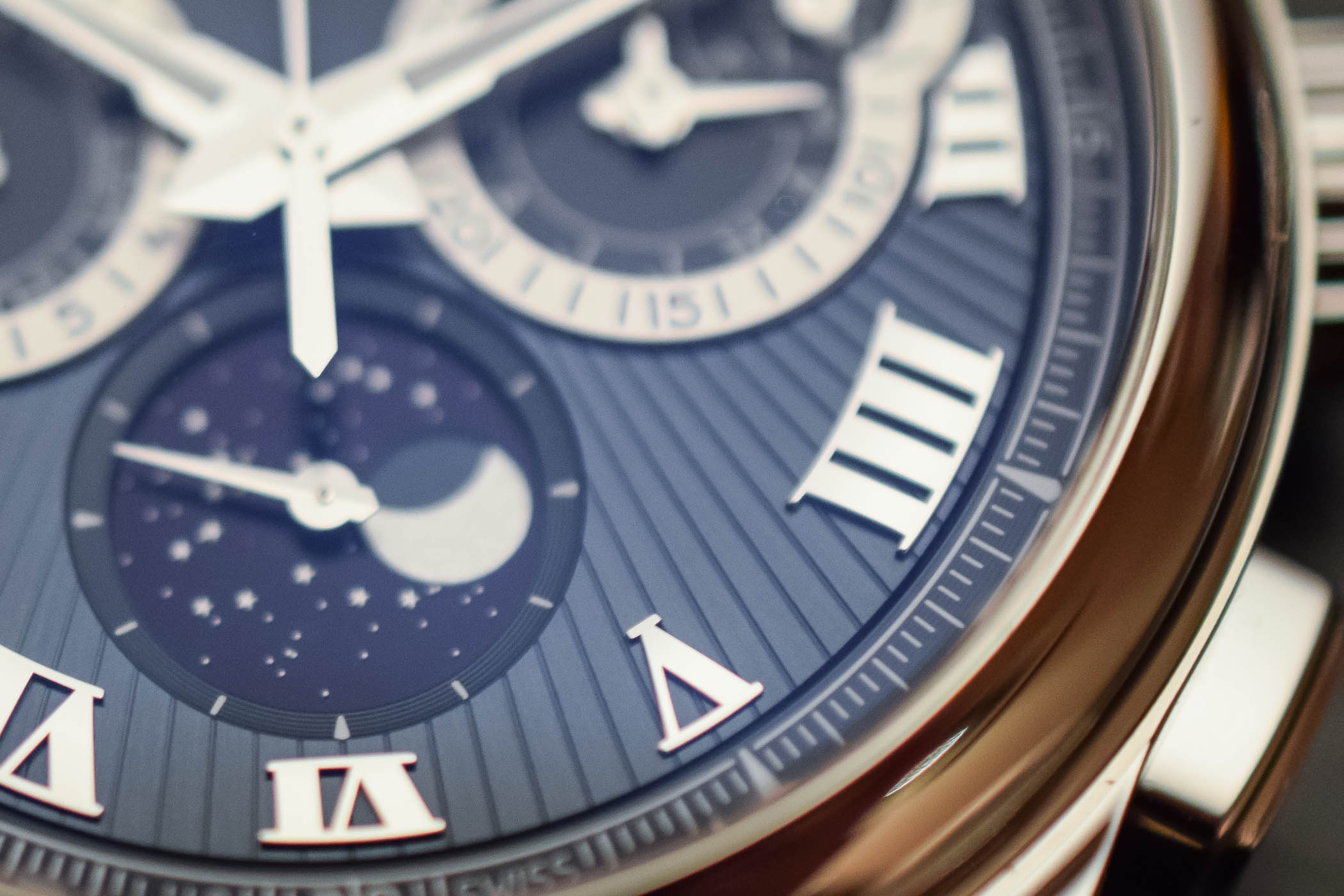

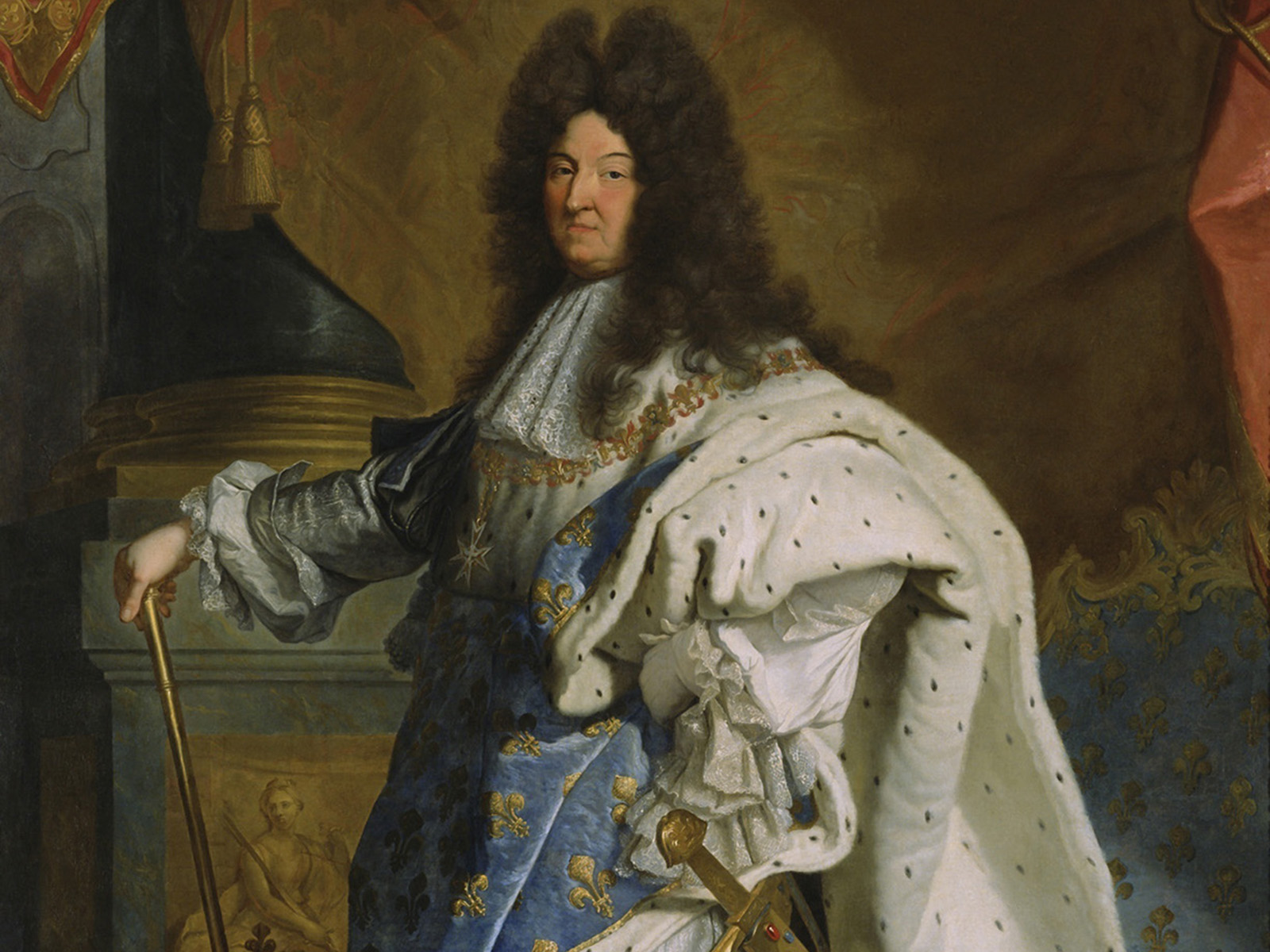

No comments:
Post a Comment